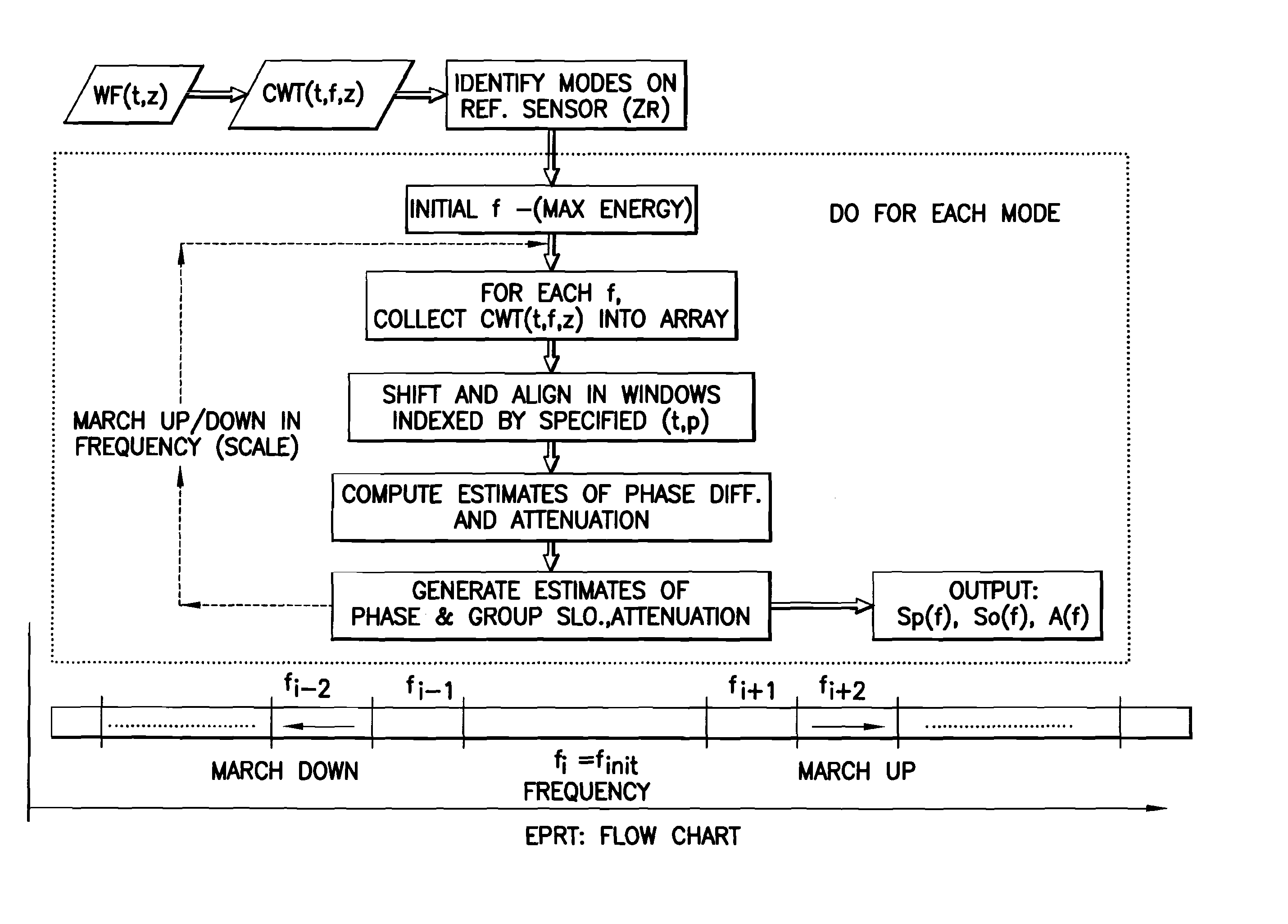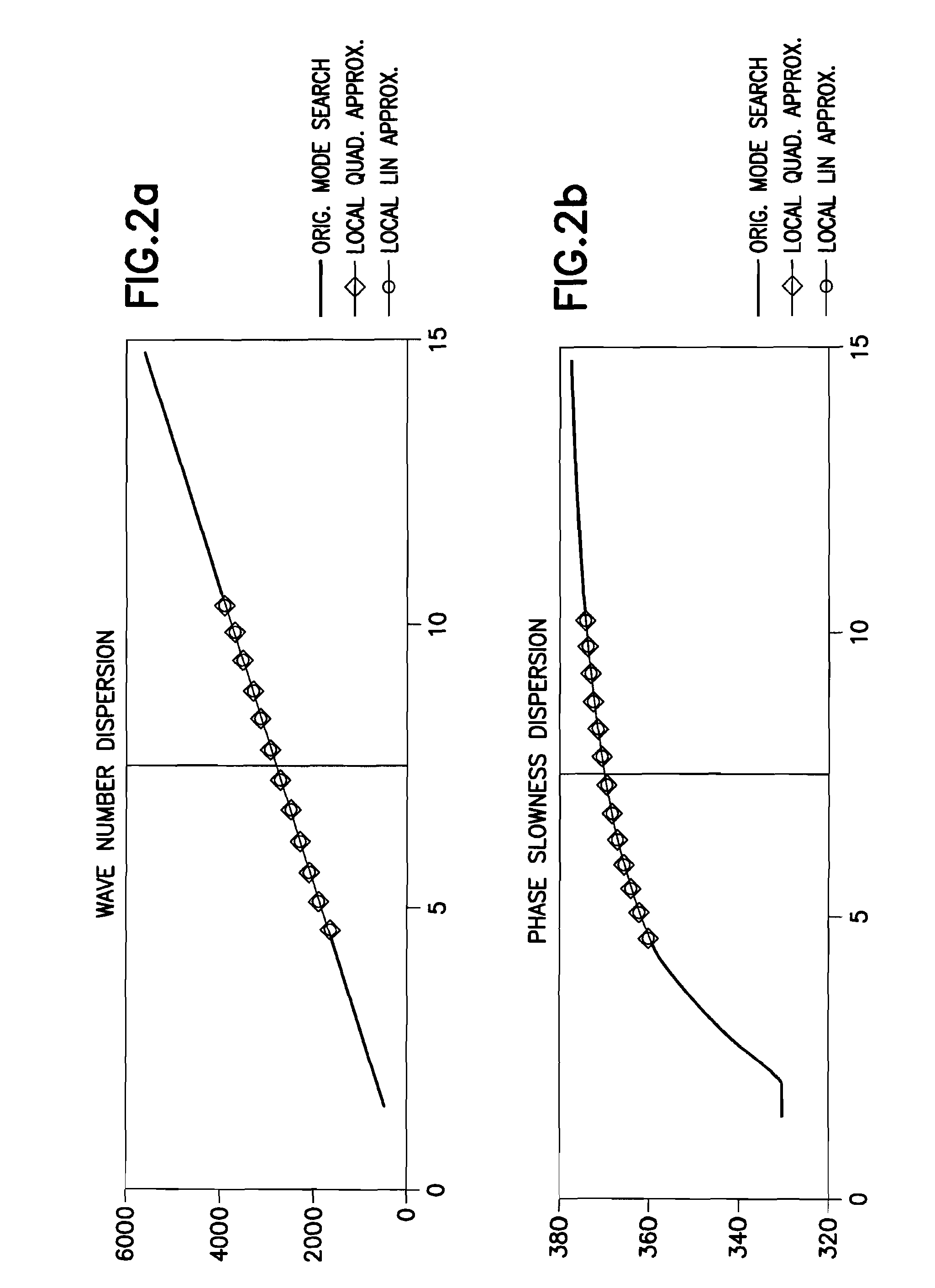Dispersion extraction for acoustic data using time frequency analysis
a time frequency analysis and extraction technology, applied in the field of acoustic data analysis, can solve the problems of generating biased results, unable to achieve large arrays of tens of sensors, and unable to achieve the resolution and accuracy necessary to produce useful answers
- Summary
- Abstract
- Description
- Claims
- Application Information
AI Technical Summary
Benefits of technology
Problems solved by technology
Method used
Image
Examples
Embodiment Construction
[0030]In accordance with the invention, dispersion curves are produced by an analyzer unit from acoustic data gathered by a borehole logging tool. Regardless of the embodiments illustrated, the logging tool may be of a wireline type, logging while drilling type, or any other type. Further the transmitter may be used to excite a dipole, monopole, quadrupole or any other multipole borehole acoustic mode. It should also be noted that seismic and borehole seismic data may be utilized, since both can contain dispersive arrivals. Each “sensor” includes a source (one or more transmitters) and a receiver (one or more associated hydrophones). For example, one transmitter and eight receivers constitute a set of eight sensors. Characteristic features of a sensor include the type of acoustic disturbance emitted by the source, and the distance (spacing) between the source and receiver.
[0031]FIG. 1 illustrates one example of a logging tool (106) used to acquire data from which dispersion curves w...
PUM
 Login to View More
Login to View More Abstract
Description
Claims
Application Information
 Login to View More
Login to View More - R&D
- Intellectual Property
- Life Sciences
- Materials
- Tech Scout
- Unparalleled Data Quality
- Higher Quality Content
- 60% Fewer Hallucinations
Browse by: Latest US Patents, China's latest patents, Technical Efficacy Thesaurus, Application Domain, Technology Topic, Popular Technical Reports.
© 2025 PatSnap. All rights reserved.Legal|Privacy policy|Modern Slavery Act Transparency Statement|Sitemap|About US| Contact US: help@patsnap.com



